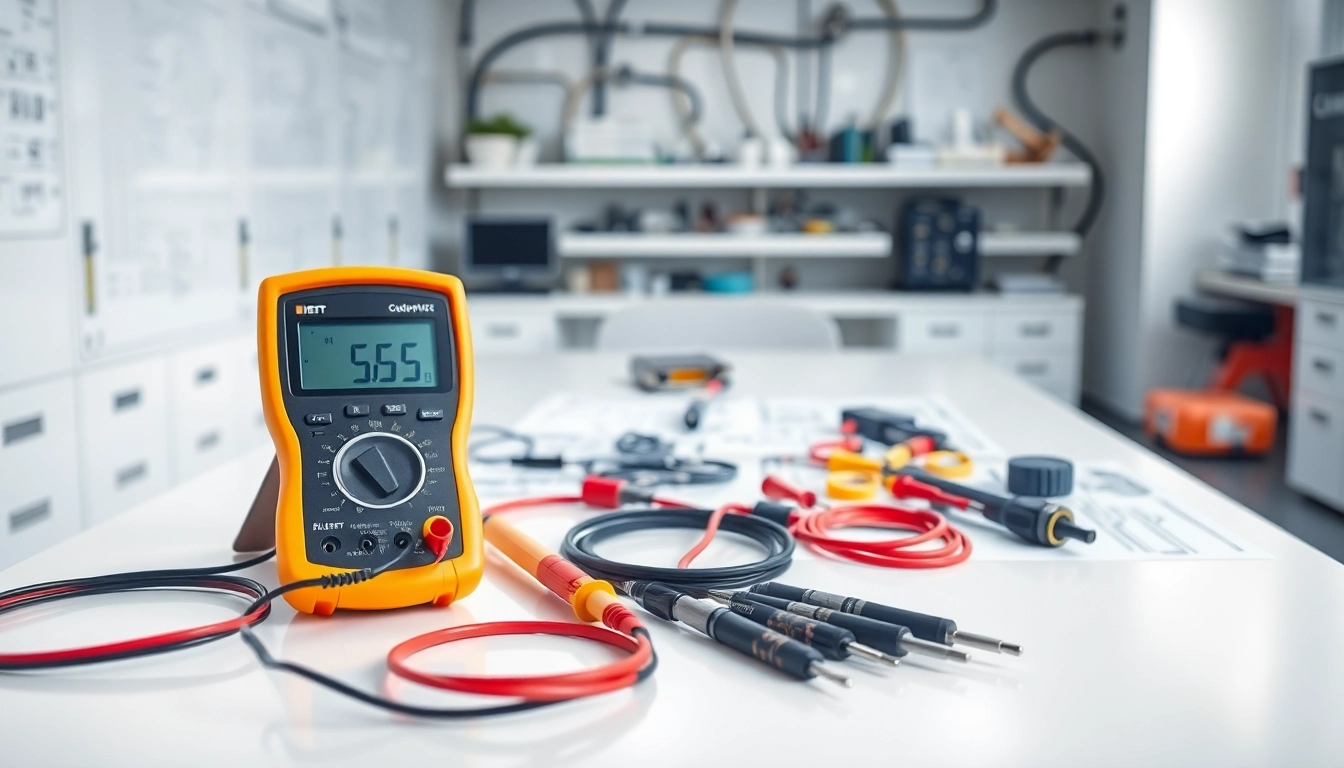Understanding Laminating Resin
What is Laminating Resin?
Laminating resin is a synthetic compound commonly utilized in the process of reinforcing materials, such as fiberglass, with the intent of creating strong, durable structures. It serves as a bonding agent that provides a robust layer, enhancing the integrity of the material it is applied to. The primary function of the laminating resin is to saturate fabric or reinforcements, producing a composite material that exhibits superior mechanical properties when compared to its individual components. Lamination is an essential technique in various industries, allowing for the production of everything from boats and airplanes to modern furniture and automotive components.
Laminating resins are formulated to cure into solid structures, providing excellent adhesion and strength. Typically, these resins are available in a variety of chemical formulations, including polyester, vinyl ester, and epoxy. Each type possesses distinct characteristics that suit specific applications, making it vital for users to select the appropriate resin for their project needs. For a deeper understanding of laminating resin varieties and applications, you can explore this laminating resin guide.
Types of Laminating Resin Available
The selection of laminating resin types directly influences the performance of the final composite material. The most common types of laminating resins include:
- Polyester Laminating Resin: Often used in marine and automotive applications, this type is recognized for its affordability and ease of use. It’s particularly effective in environments where low shrinkage and high adhesion are required.
- Epoxy Laminating Resin: Known for its superior strength and flexibility, epoxy laminating resin provides a strong bond that’s resistant to moisture, chemicals, and temperature changes. It’s ideal for high-performance applications such as aerospace and high-end recreational equipment.
- Vinyl Ester Laminating Resin: Combining the best characteristics of both polyester and epoxy, vinyl ester resin offers high strength and resistance to corrosion. It’s commonly used in industrial applications where chemical resistance is critical.
Applications of Laminating Resin in Various Industries
Laminating resin finds applications across diverse sectors, including:
- Aerospace: In the manufacturing of aircraft components, laminating resin is utilized to create lightweight, strong structures that can withstand high stress and environmental changes.
- Marine: Boats and yachts are frequently constructed using laminated composites, benefiting from the waterproof and durable properties of the resin. The resin helps maintain structural integrity while allowing for aesthetic finishes.
- Automotive: Many automotive parts, such as panels, interiors, and structural components, utilize laminating resin for weight reduction without compromising on safety and performance.
- Construction: The construction industry employs laminating resins in composite beams, panels, and moulds that provide strength and durability, contributing to building longevity and safety.
- Furniture: Laminated wood and design elements often feature laminating resin to enhance durability and provide a smooth, appealing finish suitable for indoor and outdoor use.
Benefits of Using Laminating Resin
Durability and Strength of Laminating Resin
One of the primary benefits of laminating resin is the exceptional durability it imparts to composite structures. Resins cure into rigid forms that withstand significant mechanical loads, making them suitable for heavy-duty applications. The lamination process not only reinforces the existing material but also protects it from environmental factors such as moisture, chemicals, and UV exposure. This enhanced durability translates into longer service life and reduced maintenance costs, a critical aspect for industries that rely on performance and reliability.
Cost-Effectiveness of Laminating Resin Solutions
Despite the initial costs associated with purchasing laminating resins and the required materials for application, these solutions often lead to significant long-term savings. Laminating resin products can combine multiple elements into one composite, reducing the weight and material requirements of final products. Furthermore, the superior mechanical properties of laminated structures can lower the need for repairs and replacements, contributing to overall cost savings throughout the lifecycle of the products. This makes laminating resin a cost-effective solution for manufacturers and builders alike.
Environmental Considerations with Laminating Resin
Increasingly, there is a focus on sustainability within the chemical formulation of laminating resins. Many manufacturers are now producing eco-friendly options that are less harmful to the environment. These resins feature low volatile organic compound (VOC) content, ensuring lesser impact on air quality during application. Additionally, advancements in biobased resins—derived from renewable resources—are paving the way for greener alternatives. The environmental considerations surrounding laminating resin use are a key factor for businesses aiming to comply with sustainability regulations and market demands for eco-conscious products.
How to Choose the Right Laminating Resin
Factors to Consider When Selecting Laminating Resin
Selecting the appropriate laminating resin is critical to the success of a project. Users should consider the following factors:
- Application Environment: Understanding whether the end-product will be exposed to moisture, heat, or chemicals will determine whether a polyester, epoxy, or vinyl ester resin is best suited.
- Mechanical Properties Required: Analyze the strength and flexibility needs of the application. For example, epoxy resins are preferred for high-strength applications, while polyester is effective for low-cost applications.
- Ease of Use: Some resin types are more user-friendly than others, which can affect project timelines. Users should assess their familiarity with resin working processes before making a selection.
- Cure Time and Temperature: Different resins cure at varying rates and temperatures. Users should select a resin that aligns with their working environment to optimize productivity.
Matching Laminating Resin to Your Project Needs
Guided by understanding the application and environmental demands, users can better match the laminating resin to their project requirements. Consider prototypes or small test batches using different resins to evaluate performance before full-scale application. This practical approach allows users to discern how well a resin adheres to materials, the finish quality achieved, and any relevant working properties, ultimately guiding the decision-making process towards the most effective solutions.
Common Mistakes to Avoid with Laminating Resin
Several common pitfalls can arise when working with laminating resin. Avoiding these errors can lead to better outcomes:
- Incorrect Mixing Ratios: Failing to adhere to specified mixing ratios can lead to incomplete cures or weak bonds, impacting the overall strength of the laminate.
- Poor Surface Preparation: Inadequate surface preparation can result in weak adhesion between layers. Surfaces should be cleaned, sanded, and primed as necessary.
- Nets and Fabrics: Not using the appropriate type of reinforcing fabric or net can undermine the intended benefits of the resin. Always choose the right material for the specific resin type.
- Neglecting Safety Protocols: Failing to follow safety guidelines when handling resin can lead to health risks. Always wear appropriate personal protective equipment (PPE) and ensure adequate ventilation in the workspace.
Best Practices for Working with Laminating Resin
Preparation and Safety Guidelines
Proper preparation is key to ensuring optimal results with laminating resin. Users should follow a structured process:
- Make sure to set up a clean and controlled workspace to prevent contamination of materials.
- Gather all necessary tools and materials beforehand, including mixing containers, brushes, roller pads, and PPE.
- Thoroughly read and understand the resin manufacturer’s instructions to ensure compliance with curing times and working temperatures.
- Establish a curing area that is appropriately ventilated and temperature-controlled to facilitate proper resin curing.
Adhesive safety measures include wearing gloves, goggles, and respiratory protection when handling resin and ensuring that flammable materials are kept away from hotspots.
Application Techniques for Laminating Resin
Applying laminating resin requires careful technique to achieve a smooth, uniform finish. The following methods are commonly used:
- Brush Application: Ideal for small projects, applying resin with a brush allows for detailed work. Ensure an even coat is reached, with no dry areas left uncoated.
- Roller Application: Rollers are effective for larger areas, enabling consistent coverage across expansive surfaces. The roller should distribute resin uniformly without leaving air bubbles.
- Spray Application: For high-precision applications, a spray method can deliver a thin, even layer of resin across complex geometries.
Regardless of the method chosen, ensuring complete saturation of the fabric or reinforcement material is crucial for strength and durability in the final composite.
Curing and Finishing with Laminating Resin
Curing is a critical phase that allows the laminating resin to reach its optimal strength and bonding properties. Users should consider:
- Cure Time: Depending on the resin type, curing can range from a few hours to several days. Ensure that all performance requirements are met during this period.
- Temperature Control: Curing should occur within the recommended temperature range. Fluctuations can lead to suboptimal resin properties.
- Finishing Techniques: Once cured, surfaces can be sanded, painted, or polished as desired. It’s essential to follow guidelines for finishing to maintain performance and aesthetic quality.
Post-curing, inspect for any flaws or imperfections. Sanding and careful finishing can enhance the product appearance while preserving structural integrity.
Future Trends in Laminating Resin Technologies
Innovative Developments in Laminating Resin
The field of laminating resin is continuously evolving, with significant innovations aimed at enhancing performance and usability.
- High-Performance Resins: Developing more resilient resin formulations is a focus to cater to demanding applications involving extreme conditions.
- Thermal and Electric Curing Improvements: Techniques are being explored to expedite curing processes, utilizing heat and electrical energies to achieve faster lamination.
- Smart Materials: Incorporating sensors within laminated composites is an emerging trend that allows materials to monitor their health and performance in real-time.
Impact of Technology on Laminating Resin Applications
Technological advancements in manufacturing processes, monitoring, and automation are revolutionizing the application of laminating resin. Automation allows for consistent quality control, while smarter design tools can optimize material usage and reduce waste. Innovations in robots for laminating processes are also leading to higher efficiency and lower labor costs, which can make composite manufacturing more accessible across various sectors.
Trends in Sustainability and Laminating Resin
Sustainability is at the forefront of product development in the laminating resin market. Manufacturers are exploring bio-resins and recycling options—utilizing leftover resin and composite material for new applications. As demand for eco-friendly products continues to rise, companies that invest in sustainable solutions are likely to maintain competitive advantages, appealing to more environmentally conscious consumers and industries.



